#web 3 metaverse
Explore tagged Tumblr posts
Text
Play to Earn Reality Games & RPG Adventures Online
In the ever-evolving world of gaming, play to earn reality games are revolutionizing how players engage with digital experiences. With the rise of blockchain and the metaverse 3D games, gamers can now immerse themselves in virtual worlds while earning real-world rewards. If you love RPG games online, this new era of gaming offers endless opportunities to explore, battle, and trade within expansive metaverse environments.

The Rise of Play to Earn Reality Games
Traditional gaming has always been about entertainment, but now players can also monetize their skills. Play to earn reality games introduce economic incentives, allowing gamers to earn cryptocurrency or NFTs (non-fungible tokens) through gameplay. These games create digital ecosystems where every action—whether completing quests, trading items, or battling opponents—holds real-world value.
Metaspace, a leading name in metaverse reality games, offers innovative experiences where players can interact in a shared, persistent virtual universe. These games merge augmented reality (AR) and blockchain technology, creating a gaming environment that is both immersive and financially rewarding.
RPG Games Online: A New Dimension of Adventure
The role-playing game (RPG) genre has always been a fan favorite, allowing players to step into different characters and explore fantasy worlds. Now, free online RPG games are integrating Web3 technology, offering decentralized gaming where players have full ownership of in-game assets.
With the introduction of metaverse 3D games, RPGs have evolved into vast open-world experiences. Players can engage in epic battles, forge alliances, and even earn virtual currency while completing missions. This shift allows gamers to have a more interactive and rewarding experience, making online RPGs more engaging than ever before.
Web 3 Play to Earn Games: The Future of Digital Gaming
The transition from traditional gaming to Web3 is transforming how games operate. Unlike conventional models where developers control all in-game assets, Web 3 play to earn games and empower players by giving them true ownership. This means that weapons, characters, and other collectibles exist as NFTs that can be traded or sold in digital marketplaces.
Metaspace is at the forefront of this gaming revolution, offering high-quality metaverse reality games that combine action, strategy, and real-world value. Whether you prefer action-packed RPGs or interactive multiplayer games, Web3 ensures that every moment you spend in the game is both thrilling and profitable.
Conclusion
The gaming industry is undergoing a major transformation, with play to earn reality games leading the way. As technology advances, gamers can expect more immersive experiences in free online RPG games and interactive metaverse 3D games. With platforms like Metaspace pushing the boundaries, the future of gaming looks more exciting and rewarding than ever before. Are you ready to explore the metaverse and turn your gaming skills into earnings? Now is the time to step into the world of Web3 gaming!
#play to earn reality games#rpg games online#free online rpg games#metaverse reality games#metaverse 3d games#web 3 play to earn games
0 notes
Text
Exploring the Latest Trends in Web3 Development in the USA
Web3, the next evolution of the internet, is transforming the digital landscape with decentralized applications (dApps), blockchain technology, and enhanced user experiences. In the USA, this innovative paradigm shift is shaping various sectors, from finance to gaming and beyond. Let's delve into the latest trends in Web3 development and understand why Tanthetaa stands out as a top choice for Web3 development in the USA.
Trend 1: Decentralized Finance (DeFi) Expansion
DeFi continues to gain momentum in Web3, offering decentralized lending, borrowing, and trading solutions. Smart contracts on blockchain networks facilitate these financial services, providing users with greater control and transparency over their assets.
Trend 2: Non-Fungible Tokens (NFTs) and Digital Collectibles
NFTs have surged in popularity, enabling unique digital assets such as art, music, and virtual real estate to be tokenized and traded on blockchain platforms. This trend is reshaping the art and entertainment industries, creating new avenues for creators and collectors alike.
Trend 3: Metaverse Development
The Metaverse, a virtual universe where users can interact, create, and transact, is a hot topic in Web3. Companies are investing in Metaverse development, creating immersive experiences, virtual economies, and digital identities within interconnected virtual worlds.
Trend 4: Decentralized Identity Solutions
Decentralized identity (DID) solutions are gaining traction as users seek more control over their personal data. Blockchain-based DID platforms offer secure, verifiable, and privacy-preserving identity management, enhancing trust and security in digital interactions.
Trend 5: Sustainability and Green Web3 Initiatives
As environmental concerns grow, there's a push for sustainable practices in Web3 development. Projects focusing on energy-efficient blockchain protocols, carbon offsetting mechanisms, and eco-friendly NFT marketplaces are emerging to address these challenges.
Why Choose Tanthetaa for Web3 Development in the USA?
Expertise in Blockchain Technology: Tanthetaa has a team of experienced blockchain developers who are well-versed in building scalable and secure blockchain solutions for various industries.
Innovative Approach to Web3: Tanthetaa stays updated with the latest trends and technologies in Web3, ensuring that their solutions are cutting-edge and future-ready.
Focus on User Experience: Tanthetaa prioritizes user experience in Web3 applications, creating intuitive interfaces and seamless interactions for end-users.
Strong Commitment to Security: Security is paramount in Web3, and Tanthetaa employs robust security measures and best practices to safeguard data and assets on blockchain networks.
Collaborative Partnership: Tanthetaa believes in collaborative partnerships with clients, working closely to understand their needs and deliver tailor-made Web3 solutions that drive success.
Conclusion
In conclusion, the trends in Web3 development are shaping a dynamic and innovative digital ecosystem in the USA. Tanthetaa's expertise, innovation, focus on user experience, security measures, and collaborative approach make it a standout choice for organizations seeking top-notch Web3 development services in the USA.
0 notes
Text
AI hasn't improved in 18 months. It's likely that this is it. There is currently no evidence the capabilities of ChatGPT will ever improve. It's time for AI companies to put up or shut up.
I'm just re-iterating this excellent post from Ed Zitron, but it's not left my head since I read it and I want to share it. I'm also taking some talking points from Ed's other posts. So basically:
We keep hearing AI is going to get better and better, but these promises seem to be coming from a mix of companies engaging in wild speculation and lying.
Chatgpt, the industry leading large language model, has not materially improved in 18 months. For something that claims to be getting exponentially better, it sure is the same shit.
Hallucinations appear to be an inherent aspect of the technology. Since it's based on statistics and ai doesn't know anything, it can never know what is true. How could I possibly trust it to get any real work done if I can't rely on it's output? If I have to fact check everything it says I might as well do the work myself.
For "real" ai that does know what is true to exist, it would require us to discover new concepts in psychology, math, and computing, which open ai is not working on, and seemingly no other ai companies are either.
Open ai has already seemingly slurped up all the data from the open web already. Chatgpt 5 would take 5x more training data than chatgpt 4 to train. Where is this data coming from, exactly?
Since improvement appears to have ground to a halt, what if this is it? What if Chatgpt 4 is as good as LLMs can ever be? What use is it?
As Jim Covello, a leading semiconductor analyst at Goldman Sachs said (on page 10, and that's big finance so you know they only care about money): if tech companies are spending a trillion dollars to build up the infrastructure to support ai, what trillion dollar problem is it meant to solve? AI companies have a unique talent for burning venture capital and it's unclear if Open AI will be able to survive more than a few years unless everyone suddenly adopts it all at once. (Hey, didn't crypto and the metaverse also require spontaneous mass adoption to make sense?)
There is no problem that current ai is a solution to. Consumer tech is basically solved, normal people don't need more tech than a laptop and a smartphone. Big tech have run out of innovations, and they are desperately looking for the next thing to sell. It happened with the metaverse and it's happening again.
In summary:
Ai hasn't materially improved since the launch of Chatgpt4, which wasn't that big of an upgrade to 3.
There is currently no technological roadmap for ai to become better than it is. (As Jim Covello said on the Goldman Sachs report, the evolution of smartphones was openly planned years ahead of time.) The current problems are inherent to the current technology and nobody has indicated there is any way to solve them in the pipeline. We have likely reached the limits of what LLMs can do, and they still can't do much.
Don't believe AI companies when they say things are going to improve from where they are now before they provide evidence. It's time for the AI shills to put up, or shut up.
5K notes
·
View notes
Text

In the metaverse, we transcend distances, time zones, and cultural barriers, fostering global connections and shared experiences like never before.
Join Our WhatsApp Community To Stay Updated: https://chat.whatsapp.com/JkAdOX58mGY7pujRImTdci
#metaverse#web 3#ai#artificial intelligence#play 2 earn#future technology#koop360#koopmetaversebots#koopverse#virtual world
1 note
·
View note
Text

It's the 56 viewers in just 16 hours that really sell the scope and reach of this devastating news story.
#crypto#NFTs#Eminem#crypto losers#web 3 is obviously the future#reminded of that Dan Olson video about the metaverse news service that no one actually watches
1 note
·
View note
Text
Unleashing the Power of Web 3.0: A Journey into the Decentralized Future
Welcome to the revolutionary era of Web 3.0, where the traditional boundaries of the internet are shattered, and a decentralized paradigm emerges. In this exciting journey, we’ll delve into the intricacies of Web 3.0, explore its transformative potential, and witness how it’s reshaping the digital landscape as we know it. From Web 1.0 to Web 2.0: The Evolution of the Internet To truly…

View On WordPress
0 notes
Text
RWBY Grim Tales Masterpost
A compilation of the Grim Tales from both last year and this year. I hope to try and do more during October next year, but hey, there's always the Winter Tales to look forward to. Enjoy, everyone and Happy Halloween!
Chapter 1- The Wrong Demon
Chapter 2- Caught in the Web
Chapter 3- Into the Metaverse
Chapter 4- The Crow
Chapter 5- When Jaune met the Gold Dragon
Chapter 6- The Hunt
Chapter 7- Trick or Treat
Chapter 8- A Spooky Night at Haven Academy
Chapter 9- Undead Boyfriend
Chapter 10- Blood Reborn
Chapter 11- Moonslice Makai
Chapter 12- Darkness Within
Chapter 13- Calling of the Witchblade
Chapter 14- Vampire's Fangs
Chapter 15- Bargain
Chapter 16- Red Riding Hood and the Big Bad Cat
#rwby#rwby au#rwby fanon#grim tales#rwby grim tales#masterpost#rwby grim tales masterpost#halloween#darksaiyangoku.txt
7 notes
·
View notes
Text
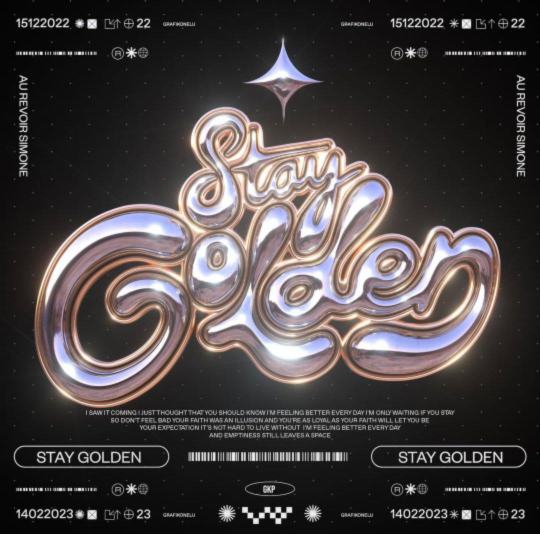
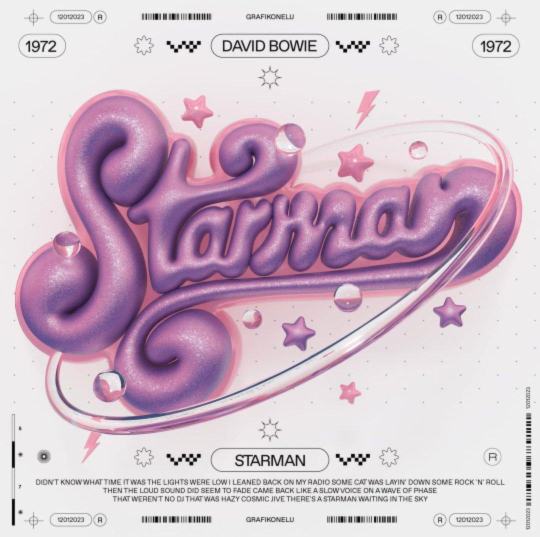
3d Y2k in Graphic Designing
Trends come and go in the world of graphic design, but some are hard to forget. Among them, 3D Y2K design is a trend that has caught my attention over the last few years. It's an aesthetic that takes the nostalgia of early 2000s internet culture and the futuristic appeal of three-dimensional digital artistry to a new level. As graphic designers seek fresh ways to captivate audiences, 3D Y2K has emerged as a common trend that speaks to both nostalgia and innovation.
What is 3D Y2K Design?
3D Y2K design is a renewed take on the early 2000s digital aesthetic but with a twist. It has shiny metallic textures, bubble-like typography, neon gradients, and cyber-inspired elements. Imagine a shiny, future-like interface in early computer advertisements, video game graphics, or sci-fi movies from the late '90s and early 2000s. Often, these feel dreamy, surreal, and hyper-digital, with over-the-top lighting effects, smooth curved surfaces, and an overall look of futurism.
Key Elements of 3D Y2K Design
• Glossy and metallic finishes – Reflective, liquid-like surfaces that give a smooth, futuristic look. • Bubble and chrome typography – Thick, shiny letters often thought of as old-school WordArt or futuristic sign billboarding. • Neon and holographic gradients – Bright, high contrast colors giving off the feel of digital aesthetics. • Cyber-inspired motifs – Grid background, wireframe items, and pixelated details • Soft, rounded edges and inflated shapes, such as balloons. Such is the aesthetic blending elements of historical digital culture along with modernistic 3D rendering techniques: bold and graphic.
Why is 3D Y2K Interesting?
The most obvious reason why 3D Y2K design has been quite popular among graphic artists is because of its powerful nostalgic value. Millennials and Gen Z audiences grew up in an era where the internet was born, and so they are heavily attached to��visual aesthetics of those times. Retro-futurism reminds them of the first websites, computer games, and advertisements they used to see as kids, thus emotionally attaching itself to them. At the same time, 3D Y2K design is also fantastically futuristic. With cutting-edge techniques used in rendering and lighting effects and digital textures, it's like this design breathes fresh air of forward thinking. It's old-school with digital charm yet matches current innovation, setting it apart from other minimalist and flat designs in the pack.
The other point of attraction would be its high visual drama. A 3D element naturally brings depth and reality, making the design more immersive and engaging. When used in branding, web design, motion graphics, or advertising, the glossy, hyper-digital style of Y2K 3D immediately turns heads.
Why is 3D Y2K a Common Trend in Graphic Design?
The emergence of 3D Y2K as a strong contender for the trend in graphic design can't be far from the following major reasons:
1. Advancements in 3D Design Software Modern AI software such as Blender, Cinema 4D, and Adobe Substance 3D are now giving graphic artists the ability to create stunning 3D graphics more easily than ever before. Simple-to-follow tutorials and an AI-assisted rendering workforce allow only the most brave of artists to try their hands at this aesthetic, no heavy lifting/professional experience needed in 3D modeling at all.
2. Rise of Y2K Aesthetic in Fashion, Culture, and Somewhere in Between The revival of the Y2K aesthetic: it is back and in your face in fashion, music, and media. Celebrities, influencers, and brands affordably sport early 2000s looks, thus allowing themselves to be embraced by digital and graphic design currents.
3. Digital Realism and the Metaverse As the hyper-realistic requirement is growing for digital cinemas, especially in metaverses, for high-end NFTs and digital spaces, the futuristic yet nostalgic appeal of 3D Y2K design establishes its relevance in the dynamic digital world.
4. Social Media and Virals 3D Y2K designs are the definition of viral due to their splashy aesthetics. Many graphic artists express their Y2K vibes on Instagram, TikTok, or Behance, giving rise to more trends.
All in all, 3D Y2K design is not just a fad; it's an active blend of nostalgia and digital postmodernism. It attracts attention and evokes emotion, therefore making itself versatile to be integrated into any creative field-and is for this reason chosen by many graphic designers. As technology grows and the need for immersive digital experiences increases, the 3D Y2K aesthetic will likely be around for decades to come in the graphic arts. This is worth investigating if you're just a designer who would like to take a shot at new stylings and wonder about digital art and 3D Y2K in itself-a fascinating field to look into!
** Stunning 3D Y2K graphic design by @grafikonelu on Instagram, beautifully crafted! Check out their work for more amazing visuals!
4 notes
·
View notes
Text
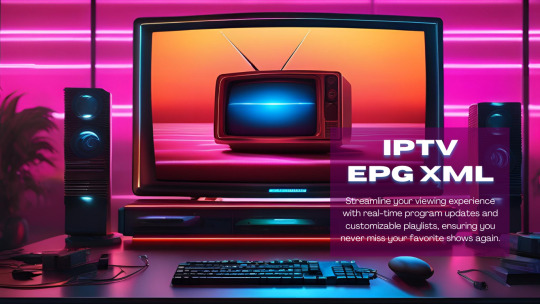
Tools and Methods for Extracting Metaverse VR Using XMLTV EPG Grabber
Metaverse VR has become an increasingly popular and immersive way for people to interact and engage with digital environments.
One of the key aspects of the Metaverse VR experience is the ability to access Electronic Program Guide (EPG) data to discover and schedule virtual events, shows, and activities.
In this blog post, we'll explore various tools and methods available for extracting Metaverse VR data using epg grabber.
What is XMLTV EPG Grabber?
XMLTV is a set of programs to process TV (tvguide) listings and help manage your TV viewing, recording, and scheduling. XMLTV EPG grabber is a tool specifically designed to extract EPG data from various sources and provide a standardized XML format for TV listings.
This format can be utilized to populate electronic program guides in various applications, including those for Metaverse VR experiences.
Tools for Extracting Metaverse VR Using XMLTV EPG Grabber
1. XMLTV GUI Grabber
XMLTV GUI Grabber is a user-friendly graphical interface tool that allows users to easily configure and run XMLTV grabbers. It provides a simple way to select sources, set up grabber options, and initiate the extraction process. This tool is suitable for users who prefer a more intuitive and visually guided approach to EPG data extraction.
2. Web-based XMLTV Grabbers
There are several web-based services and tools that offer XMLTV EPG grabber functionality. These platforms typically allow users to input their desired sources and parameters, and then generate XMLTV-compatible output for consumption in Metaverse VR applications.
Web-based grabbers are accessible from any device with an internet connection, making them convenient for users who require flexibility in their data extraction process.
3. Custom Scripting and Automation
For users with specific requirements or unique sources for Metaverse VR EPG data, custom scripting and automation can be employed to extract and format the XMLTV data. This method involves writing custom scripts or utilizing automation tools to retrieve and process EPG data from different sources, providing a high degree of customization and flexibility.
Methods for Utilizing Extracted EPG Data in Metaverse VR
Once the EPG data has been extracted using XMLTV grabbers, there are several methods for utilizing this data within the Metaverse VR environment:
Integration with Virtual Event Scheduling: EPG data can be integrated into virtual event scheduling systems within the Metaverse VR, allowing users to discover and RSVP to upcoming virtual events and experiences.
Customized Virtual TV Guide: The extracted EPG data can be used to create a customized virtual TV guide within the Metaverse VR, enabling users to browse and select virtual shows and broadcasts to attend.
Personalized Notifications and Reminders: Utilizing the extracted EPG data, personalized notifications and reminders can be sent to users within the Metaverse VR to ensure they don't miss out on their favorite virtual events or activities.
XMLTV EPG grabbers provide a valuable means of extracting xmltv epg format for use within the Metaverse VR. Whether through user-friendly graphical interfaces, web-based services, or custom scripting, these tools and methods empower users to enrich their virtual experiences with relevant and up-to-date content.
By leveraging the extracted EPG data, developers and content creators can enhance the richness and interactivity of the Metaverse VR environment, offering users a more immersive and engaging virtual experience.
Developing Mixed Reality Applications with XMLTV Data
Mixed Reality (MR) applications have been gaining traction in recent years, revolutionizing the way we interact with our digital environment. A key factor in the improvement of XMLTV data for parsing and presentation. This comprehensive guide will introduce you to the world of XMLTV data parsing and the role it plays in the development of MR applications. We'll also delve into open-source tools and scripts that can enhance your MR development experience.
Understanding XMLTV in the Context of Mixed Reality
XMLTV is a standard that is primarily used for the interchange of TV program schedule information. However, its versatile nature allows it to be adapted for use in the development of MR applications.
XMLTV Data Parsing
XMLTV data parsing is a method of extracting useful information from XMLTV feeds. This data can be used to populate the EPG (Electronic Program Guide) of a MR application, providing users with information on available programs.
Metaverse on XMLTV technology
The metaverse, a collective virtual shared space created by the convergence of physical and virtual reality, can benefit from the use of XMLTV technology. XMLTV data can be used to create a more immersive and interactive experience for users in the metaverse.
Integrating VR CGI and XMLTV
Virtual Reality (VR) Computer Generated Imagery (CGI) can be integrated with XMLTV data to create more realistic and engaging MR experiences. This integration can also enhance the user's sense of presence in the MR environment.
Open-Source Tools and Scripts for XMLTV Data Parsing
There are numerous open-source tools and scripts available for XMLTV data parsing. These tools help developers to parse, manipulate, and present XMLTV data in their MR applications.
TVHeadEnd
TVHeadEnd is an open-source TV streaming server and recorder that supports XMLTV data. It can parse and save XMLTV data into the EPG database, providing a crucial function for MR applications.
M3U
M3U is a simple text format that can be used to create playlists and organize XMLTV data. It can be used in conjunction with XMLTV data to create a more structured and user-friendly EPG.
XPath
XPath is a language that is used to navigate through elements and attributes in XML documents. It can be used to identify specific nodes or attributes in xmltv descriptions that contain useful EPG information.
StereoKit
StereoKit is an open-source mixed reality library for building HoloLens, VR, and desktop experiences. It can be used to create cross-platform MR experiences with C# and OpenXR.
Building Interactive Mixed Reality Interfaces in XMLTV Data Parsing and Presentation
Building interactive MR interfaces using XMLTV data parsing and presentation involves several steps. These include setting up your development environment, parsing the XMLTV data, creating the MR interface, and testing the application.
Setting Up Your Development Environment
Before you can start developing your MR application, you need to set up your development environment. This typically involves installing the necessary software and hardware, such as a MR headset, a development IDE, and the necessary SDKs.
Parsing XMLTV Data
Once your development environment is set up, you can start parsing the XMLTV data. This involves extracting useful information from the XMLTV feed and saving it into your application's EPG database.
Creating the MR Interface
After parsing the XMLTV data, you can start creating the MR interface. This involves designing and implementing the user interface elements, such as menus, controls, and displays.
Testing the Application
Once the MR interface is complete, you can start testing your application. This involves checking the functionality of the application and ensuring that the XMLTV data is correctly parsed and presented.
Developing mixed reality applications using XMLTV data involves a combination of data parsing, interface design, and application testing. By understanding the role of XMLTV data in MR development and utilizing the available open-source tools and scripts, you can create engaging and interactive MR applications. So, dive into the world of XMLTV and explore how it can enhance your MR development experience.
youtube
3 notes
·
View notes
Text
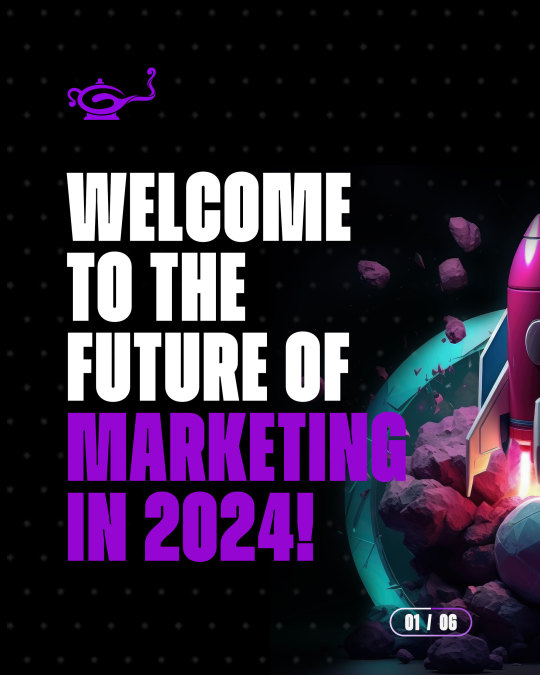
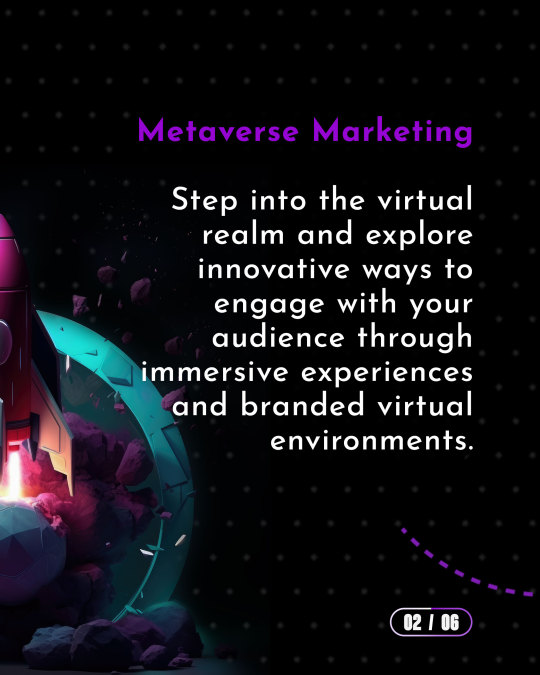
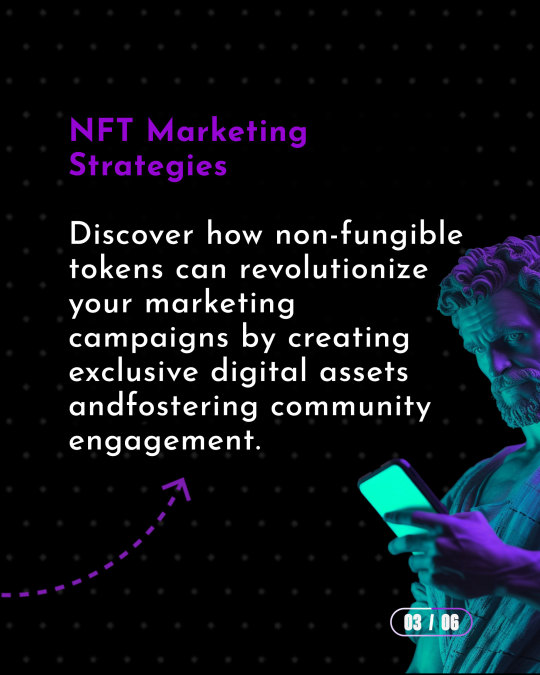
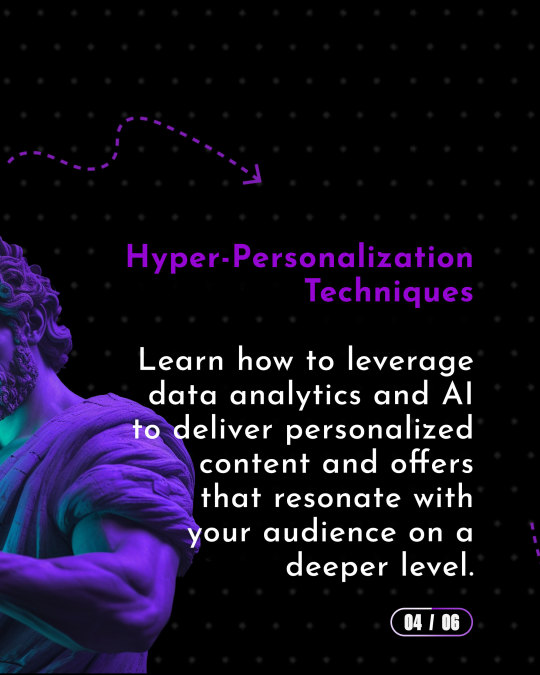
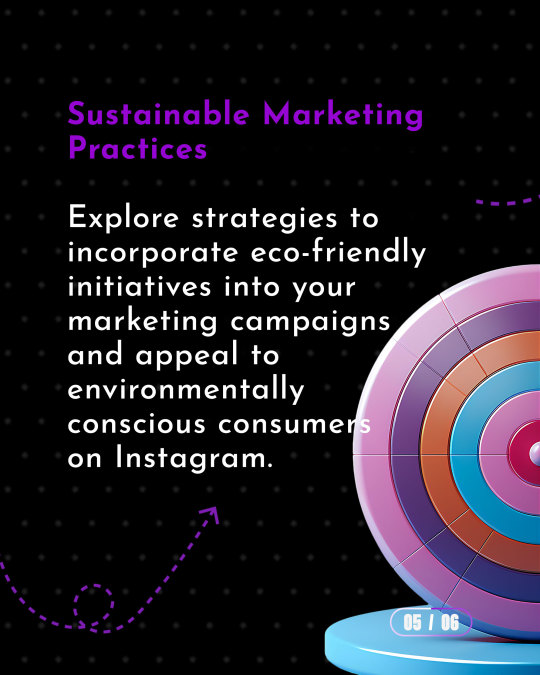

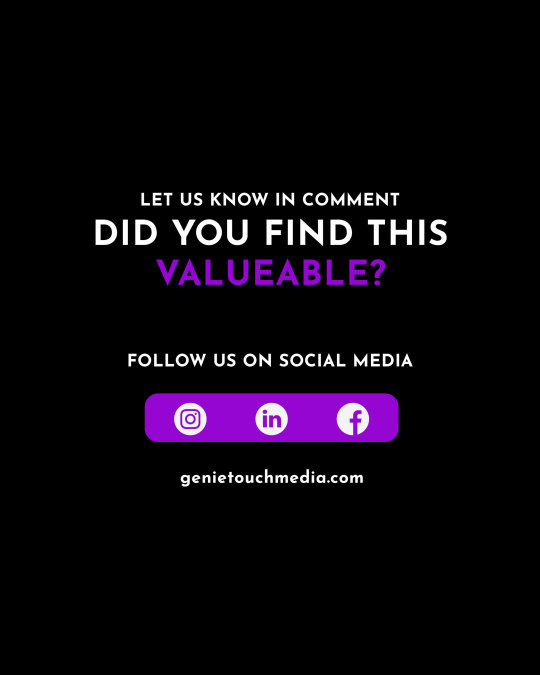
Welcome to the Future of Marketing In 2024, staying ahead means diving into cutting-edge topics like the Metaverse and NFTs.
Best Digital Marketing Services In Nashik Services we provide 1. Digital Marketing 2. Social Media Marketing 3. Logo Design 4. Web Design 5. SEO 6. Social Media Template Design 7. PPC Ads 8. Product Listing 9. Brochure Design
Contact us : ☎️ : +91 85529 99380
🌐 : genietouchmedia.com . . . #digitalmarketing#nashikbusinessassociation#business#entrepreneur#socialmediamarketing#webdesign#seo#nashik
2 notes
·
View notes
Text
SESSION 1. INTRODUCTION TO INFOCOMM TECH LAW IN SINGAPORE
OPTIONAL READING: ICT LAW IN SINGAPORE CHAPTER 1
OPTIONAL REFERENCES: LAW AND TECH IN SINGAPORE CHAPTERS 1-3
A. COURSE DESCRIPTION AND OBJECTIVE
New economies have emerged within the last two decades including digital models of transaction and disruptive innovation. Internet intermediaries generally are taking on a major role as facilitators of commercial and non-commercial transactions online. These include social networking platforms (e.g. Facebook, IG and Twitter), multimedia sharing platforms (e.g. YouTube, Apple Music and Spotify), search engines and news aggregators (e.g. Yahoo, Google), content hosts and storage facilities (e.g. Dropbox) and many others. Content generating platforms such as TikTok have also become popular even as cybersecurity concerns and other misgivings have emerged at the governmental level in some jurisdictions.
In the last few years, the use of Internet of Things (IoT) have become quite common in advanced economies, the latest being wearable devices for the 'Metaverse' and an even more immersive experience in the digital realm. Artificial Intelligence (AI) is also becoming more visible at the workplace and at home, leading to ethical concerns and a slate of guidelines globally to 'govern' its development and deployment. Most recently, interest in generative AI (GAI) emerged from the successful launch of chatGPT and other similar services.
Policies and laws have been adapted to deal with the roles and functions of Internet intermediaries, IoT and AI devices and services, and their potential effects and impact on society. Regulators in every jurisdiction are faced with the challenge to manage the new economy and players, and to balance the interest of multiple parties, in the context of areas of law including intellectual property, data protection, privacy, cloud technology and cyber-security. Different types of safe harbour laws and exceptions have emerged to protect these intermediaries and putting in place special obligations; while some forms of protections have been augmented to protect the interests of other parties including content providers and creators as well as society at large. Students taking this course will examine the legal issues and solutions arising from transactions through the creation and use of digital information, goods and services ('info') as well as the use of non-physical channels of communication and delivery ('comm').
The technological developments from Web 1.0 to 2.0 and the future of Web 3.0 with its impact on human interaction and B2B/B2C commerce as well as e-governance will be examined in the context of civil and criminal law, both in relation to the relevance of old laws and the enactment of new ones. In particular, this course examines the laws specifically arising from and relating to electronic transactions and interaction and their objectives and impact on the individual vis-à-vis other parties. Students will be taken through the policy considerations and general Singapore legislations and judicial decisions on the subject with comparisons and reference to foreign legislation where relevant.
In particular, electronic commerce and other forms of transactions will be studied with reference to the Electronic Transactions Act (2010) and the Singapore domain name framework supporting access to websites; personal data privacy and protection will be studied with reference to the Personal Data Protection Act of 2012 and the Spam Control Act; the challenges and changes to tort law to deal with online tortious conduct will be analysed (e.g. cyber-harassment under the Protection from Harassment Act (2014) and online defamation in the context of online communication); the rights and liabilities relating to personal uses of Internet content and user-generated content will be considered with reference to the Copyright Act (2021); computer security and crimes will be studied with reference to the Computer Misuse Act (2017) and the Cybersecurity Act (2018); and last, but not least, Internet regulation under the Broadcasting Act and its regulations as well as the Protection from Online Falsehoods and Manipulation Act (2019), the Foreign Interference (Countermeasures) Act (2021) and the Online Criminal Harms Bill (2021) will be critically evaluated.
You will note from the above paragraph that there have been an acceleration in the enactment of ICT laws and amendments in recent years, which shows the renewed focus of the government and policy-makers when it comes to the digital economy and society (as we move towards a SMART Nation). This is happening not online in Singapore, but abroad as well. In such an inter-connected work with porous jurisdiction when it comes to human interaction and commercial transactions, we have to be aware of global trends and, in some cases, the laws of other jurisdictions as well. When it is relevant, foreign laws will also be canvassed as a comparison or to contrast the approach to a specific problem. Projects are a good way to approach in greater depth.
B. CLASS PREPARATION FOR SESSION 1
In preparation for this session, use the online and library resources that you are familiar with to answer the following questions in the Singapore context (and for foreign/exchange students, in the context of your respective countries):
What are the relevant agencies and their policies on ICT?
What are the areas of law that are most impacted by ICT?
What is the government's position on Artificial Intelligence?
What are the latest legal developments on this field?
Also, critically consider the analysis and recommendations made in the report on Applying Ethical Principles for Artificial Intelligence in Regulatory Reform, SAL Law Reform Committee, July 2020. Evaluate it against the second version of the Model AI Governance Framework from the IMDA. Also, look at the Discussion Paper on GAI released on 6 June 2023. Take note of this even as we embark on the ‘tour’ of disparate ICT topics from Session 2 onwards, and the implications for each of those areas of law that will be covered in class.
C. ASSESSMENT METHOD AND GRADING DISTRIBUTION
Class Participation 10% (individually assessed)
Group Project 30% (group assessed)
Written Exam 60% (2 hour open book examination)
This course will be fully conducted in the classroom setting. Project groups will be formed by week 2, projects will be assigned from week 3, and presentations will begin from week 4 with written assignments to be due for submission a weeks after presentation. Further details and instructions will be given after the groups are formed, but before the first project assignment.
D. RECOMMENDED TEXTBOOK AND READINGS
The main textbook is: Warren B. Chik & Saw Cheng Lim, Information and Communications Technology Law in Singapore (Academy Publishing, Law Practice Series, July 2020). You can purchase the book (both physical and electronic copies) from the Singapore Academy of Law Publishing (ask for the student discount). If you prefer, there are copies available in the reserves section of the Law Library that you can use. The other useful reference will be: Chesterman, Goh & Phang, Law and Technology in Singapore (Academy Publishing, Law Practice Series, September 2021).
Due to the rapid pace of development in the law in some areas of analysis, students will also be given instructions and pre-assigned readings via this blog one week before each lesson. Students need only refer to the SMU eLearn website for administrative information such as the Project Schedule and the Grade Book as well as to share project papers and presentation materials. Students will be expected to analyse legislative provisions and/or cases that are indicated as required reading for each week.
Free access to the local legislation and subsidiary legislation may be found at the Singapore Statutes Online website at: https://sso.agc.gov.sg.
Local cases are accessible through the Legal Workbench in Lawnet. The hyperlink can be found under the Law Databases column on the SMU Library’s Law Research Navigator at: http://researchguides.smu.edu.sg/LAW.
Other online secondary legal materials on Singapore law that you may find useful include Singapore Law Watch (http://www.singaporelawwatch.sg) and Singapore Law SG (https://www.singaporelawblog.sg).
There are also other secondary resources made available from the SMU Library when doing research for your projects such as the many other digital databases available from the LRN (e.g. Lexis, Westlaw and Hein online that are all available under the Law Databases column) and the books and periodicals that are available on the library shelves.
5 notes
·
View notes
Text
“Innovators and Leaders: Unveiling the Top IT Companies in the US”

Title: “Innovators and Leaders: Unveiling the Top IT Companies in the US”
In the fast-paced world of technology, a select group of companies stands at the forefront, steering the direction of innovation and reshaping the digital landscape. The United States, a hotbed of technological advancement, hosts an elite cadre of IT companies whose impact transcends boundaries. Let’s delve into the realms of these trailblazers, the vanguards of the industry, who continue to redefine possibilities and set new benchmarks in the realm of technology.
1. Apple Inc.: Pioneering the Perfect Union of Innovation and Elegance At the epicenter of consumer electronics and software, Apple Inc. reigns supreme. Recognized for its sleek hardware – iPhones, Macs, iPads – and a sophisticated software ecosystem encompassing iOS and macOS, Apple’s commitment to seamless integration and groundbreaking design remains unparalleled.
2. Microsoft Corporation: Empowering Every Individual and Organization on the Planet Microsoft, a tech behemoth, extends a diverse portfolio ranging from software products and cloud services to cutting-edge hardware. Windows OS, Office Suite, Azure Cloud – each element a testament to its commitment to innovation, enterprise solutions, and empowering global connectivity.
3. Vee Technologies: Vee Technologies is one of the Top IT companies in USA which stands as a leading provider of comprehensive IT services, offering a wide array of solutions designed to meet the diverse needs of businesses across various industries. Vee Technologies as one Top IT companies in USA specializes in crafting tailored software solutions that cater to specific business requirements. Their expertise in software development spans applications, platforms, and systems, ensuring alignment with clients’ unique operational needs.
4. Amazon: Beyond Borders, Beyond Commerce Amidst its colossal e-commerce empire, Amazon’s crown jewel, Amazon Web Services (AWS), stands as a commanding force in cloud computing. It spearheads the provision of scalable computing power, storage solutions, and an array of cloud-based services.
5. Alphabet Inc. (Google): Redefining Information Access and Technological Innovation Google, the epitome of innovation, ventures beyond its hallmark search engine. Google Cloud, Android OS, and an extensive suite of software applications illustrate its commitment to shaping information accessibility and fostering technological advancement.
6. Meta Platforms (formerly Facebook): Building Connections in a Digital Sphere Meta Platforms, once Facebook, focuses on social networking and leaps into the realms of virtual reality (Oculus), augmented reality, and the pioneering developments within the metaverse.
7. IBM: Where Innovation Meets Enterprise Solutions IBM’s arsenal encompasses a gamut of IT services, consulting, and enterprise solutions, including cognitive computing technologies like Watson, geared towards reshaping industries and bolstering technological capabilities.
8. Oracle Corporation: Fortifying Businesses with Comprehensive Solutions A stalwart in database software and enterprise solutions, Oracle offers a suite of cloud applications and business software, catering to diverse business needs.
9. Intel Corporation: Empowering Computing with Semiconductors Intel’s prowess in semiconductor manufacturing crafts the beating heart of countless computing devices through its microprocessors and hardware components.
10. Cisco Systems: Forging Networks and Security in the Digital Age Cisco, a pioneer in networking solutions, fortifies businesses with networking hardware, software, cybersecurity measures, and innovations in IoT technologies.
2 notes
·
View notes
Text
𝐉𝐨𝐮𝐫𝐧𝐞𝐲 𝐭𝐨 𝐭𝐡𝐞 𝐬𝐭𝐚𝐫𝐬 𝐰𝐢𝐭𝐡𝐨𝐮𝐭 𝐥𝐞𝐚𝐯𝐢𝐧𝐠 𝐲𝐨𝐮𝐫 𝐫𝐨𝐨𝐦.
Join Our WhatsApp Community To Stay Updated: https://chat.whatsapp.com/JkAdOX58mGY7pujRImTdci
#virtualreality #virtualspace #futuretechnology #AR #VR #AI #play2earn #P2E #KoopAIBots #KOOPVERSE #KoopMetaverseBots #web3 #NFT #technology #koopmetaverse #metaverse #Koopers #Koop360
#metaverse#koop360#web 3.0#virtual world#future technology#koopaibots#technology#koopverse#koopers#web 3
1 note
·
View note
Text
X MARKS THE SPOT...❌
The BZYRQ-X METAVERSE is here!🤩
Featuring digital artwork curated from BZYRQ & BZYRQ-X Collected...
200+ Tokens
40+ Artists
100+ Cells
29,000+ Archis
A year in the making...and much more to come!✨
❌🌐 Zone 1/6
External zones will be launched as I finish them!
DIRECT LINK:
https://protoworld.io/ufwZ1j
THE CUBE: CITY CENTER
MartinjoSs
(BZYRQ Metaverse Collaboration)
Aleksey Osipenkov
(BZYRQ Metaverse Collaboration)
cello
MarcelMuntyanu
GummyLSD
Brain Pudding
davidvnun
RITUAL
G6D
byviki
moranicol.exe
amato.tez
MickRenders
Myujii
_ex_mortal
disQtible
Nivvvo
Strangepeo
Art_vildtgrube
wadada
Protoworld
PLATFORM: ALIEN FASHION SHOW
Strangepeo
(BZYRQ Metaverse collaboration)
Kika Nicolela
viscous
House of The Model
Void Vision
PLATFORM: CYBER MUTATIONS
Art_vildtgrube
ShadowNemesys
cello
Klaw Machine
Bluetent
Aleksey Osipenkov
The Computer
xlaaam.tez
PLATFORM: GLI-I-I-TCHED
PHOSPHOR OPERATOR
_ex_mortal
Natived
TamasAntalART
XNA
Risotto
PLATFORM: FUTURE FLESH
abhominal
JPBilowus
CORRIDOR ARTISTS:
Mentalnoise
kuken
GummyLSD
moranicol.exe
IvnHgo_
MartinjoSs
Milindevil
UDntKnwWhoWeAre
Cyber Ocelot
disQtible
Dehiscence
RITUAL
PORTAL ROOM ARTISTS:
MartinjoSs
Needless One
BZYRQ
THANK YOU: I want to thank MartinjoSs, Aleksey Osipenkov & Strangepeo for collaborating with me to help put this space together. I also want to thank dpupperr & the Protoworld team for their endless enthusiasm and support.
Thank you to the artists and the Tezos community. I truly love this blockchain!💖 I appreciate how collaborative and fun and uplifting so many of you can be!✨
The BZYRQ-X METAVERSE was inspired by, and built as a tribute and home to MartinjoSs along with other artwork I have collected. Its purpose is to showcase underrepresented artists and onboard new people to web 3. It's also a place to hang out and enjoy the art.
The metaverse is a group effort.
I would like to encourage you to share this space, explore, take some selfies, visit the artwork profiles and support these artists. I hope you will enjoy the digital art I have collected as much as I do.😊
FOR BEST EXPERIENCE:
Desktop ONLY. Wait for the zone to fully load before exploring. Chrome browser & fast internet suggested. Dedicated graphics card ideal. The cell system loads incrementally- your experience may slow or speed up as you travel. This space uses a lot of memory, which builds up- refresh your browser or restart your computer as needed.
#metaverse#tezos#virtual reality#ethereum#tezoscollectors#tezosart#vrgallery#vrchat#virtual realms#web3#web 3.0
4 notes
·
View notes
Text

track list – SwynWriMo 2023
Wednesday, November 1 -- Villanelle Poem: [In Crumbling Castle with Ivy Wall]
Thursday, November 2 -- Community Flyer: [Town Hall Community Centre Art Classes]
Friday, November 3 -- Everyone’s a Critic: [Evangeline's Letterboxd Account]
Saturday, November 4 -- Crack!ship AU: [Black is the Colour of My True Love's Hair]
Sunday, November 5 -- Family Ties One-Shot: [Twelve Havenhall]
Monday, November 6 — Daylist: [rage religious monday morning]
Tuesday, November 7 -- Community Togetherness Thread: [I'll Huff and I'll Puff]
Wednesday, November 8 -- 160 Characters or Less: [JustAHotGuy2094]
Thursday, November 9 -- SwynRPVision: [Sparks Fly]
Friday, November 10 -- Love Is Stored In The Garlic: [The Crows Eat First]
Saturday, November 11 -- Short and Sweet One-Shot: [Elinor Aisling DunBroch: Medical Records]
Sunday, November 12 -- Background NPC: [Foundations Forming]
Monday, November 13 -- #OOTD: [Belle's Fashion Intervention]
Tuesday, November 14 -- Neighborly Plotting: [Trading Favours]
Wednesday, November 15 -- NPC Playlist! [i told the stars about you -- lionfish]
Thursday, November 16 -- Character #Inspo: [Kleopatra Schreiber's Character Blueprints]
Friday, November 17 -- Choose Your Own Swyn AU: [Christmas in Swynlake]
Saturday, November 18 -- Which Character Are You?: [get ready for a FIRST date and i'll tell you which of my characters you're going out with]
Sunday, November 19 -- Five Times X, One Time Y: Five times your character did a thing and one time … they didn’t. [In Your Dream]
Monday, November 20 -- Personality Playlist: [are you human?]
Tuesday, November 21 -- Back to the Future Thread: [I Can Hear the Bells]
Wednesday, November 22 — Enter the Metaverse: [Isabela's Computer]
Thursday, November 23 — Instagram Stories: [Simba's Instastory Goodbye]
Friday, November 24 -- Relationship Aesthetic: [Male + Female Friendships]
Saturday, November 25 -- SWYNRP Memes: [textposts from my personal blog’s #about me tag – for swynlake residents]
Sunday, November 26 -- The Final Labor: [The 23rd Annual Swynlake Games!]
Monday, November 27 -- Fairy Talent! [pinterest boards for characters]
Tuesday, November 28 -- Around the World in 30 Days: [Encanto, Isle de Silvia, Avalor]
Wednesday, November 29 -- Wordy Web-Weaving: [Tom and Missing the Sea]
Thursday, November 30 -- SWYNRP Character Wishlist: [The Muses of the Order of Hesiod]
#swynwrimo#swynwrimo2023#swynwrimotina#swynwrimotina2023#thereeee sheeee goooooes#there she goes again
2 notes
·
View notes
